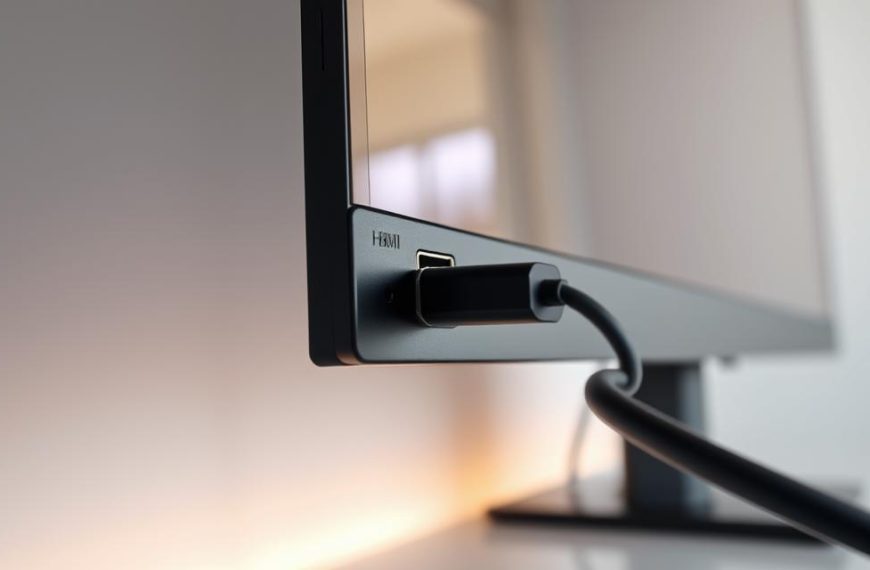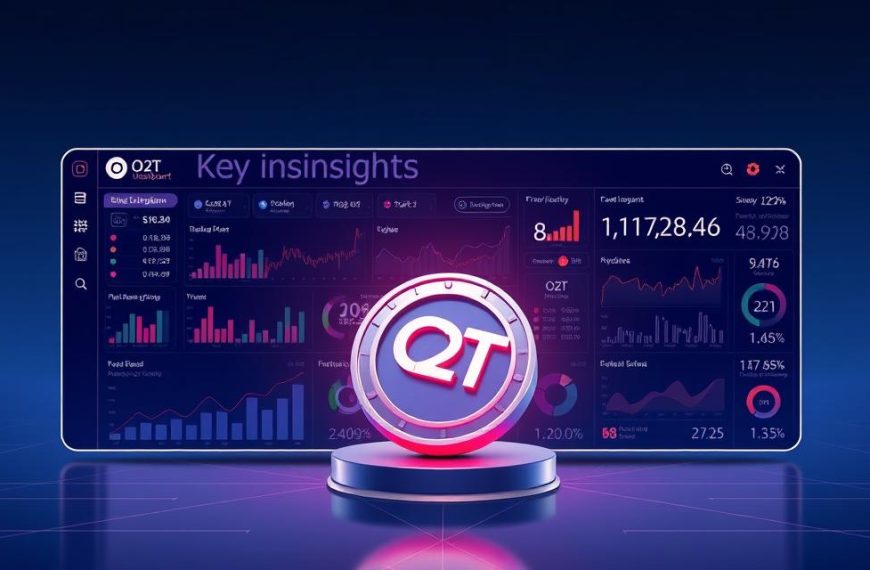This guide explains a clear buyer’s path for United States readers. It outlines how a retail investor can safely open an account, meet KYC rules and fund an exchange for an ERC‑20 token used in an AI and Web3 trading ecosystem.
Expect practical checks on platform safety, custody risks and why audits, proof‑of‑reserves and security certificates matter when assessing any listing. We also flag basic wallet options such as MetaMask and hardware devices for long‑term control.
Key facts: O2T serves governance, fee and reward roles. Historical extremes include an ATH of $0.2317 and an ATL of $0.002108. Forecast models publish a 2025 price range and longer term price prediction scenarios; these are inputs, not guarantees.
For current availability and a common retail route, see BitMart listing details via this link: BitMart listing details. The guide will next cover vetted platforms, purchase flow, funding, order types, fees, storage and US tax basics.
Quick answer: The safest ways to buy O2T in the United States right now
If you prioritise safety and convenience, start with a recognised centralised exchange that lists the token and publishes clear contract details. BitMart is a common retail route: open an account, complete KYC/AML, deposit USD or crypto, place a spot order, then withdraw to self‑custody.
Prioritise venues that publicise multi‑layer security, regular audits, 2FA and withdrawal whitelists. These controls reduce custody risk and support higher investor confidence.
Watch real user traction: active product updates, new features and fintech partnerships show meaningful project progress. A strong community and steady market depth often matter more than hype when judging long‑term growth potential.
- Compare fees, payment options and withdrawal limits to limit hidden costs that lift your effective price.
- Use price discovery tools and confirm the contract address to avoid impersonator coins like lookalikes.
- Consider a small test transaction, then withdraw holdings to a wallet you control for maximum safety.
Is O2T available to US traders and investors?
US investors can access O2T on a small number of regulated venues, with BitMart the primary retail option at present.
Availability and basics: Retail access for US users is mainly through BitMart, which lists the token for spot trading. Opening an account and passing KYC/AML is required before deposits or fiat trades are permitted.
Current exchange availability and listings
BitMart currently provides the clearest listing for this ERC‑20 token. Check the exchange’s contract address and recent 24‑hour volume before placing an order.
Compliance considerations for US residents
Expect identity verification, sanctions screening and source‑of‑funds checks at registration. These steps protect both users and the platform and align with US regulatory norms.
- Contract verification: Always confirm the official contract address to avoid similar or fake tokens.
- Liquidity: Review order book depth and volume — these affect achievable price and slippage.
- Pricing context: The token has shown wide swings between its ATH and ATL, so consider limit orders and a sensible price range.
- Sentiment and trend: Use moving averages and RSI alongside market sentiment data rather than relying on a single indicator.
- Custody: Withdraw holdings to an ERC‑20 compatible wallet such as MetaMask or a hardware device for long‑term control.
where to buy o2t crypto: vetted platforms and routes
Find practical routes and verified platforms for securing the token with minimal execution risk. This short guide compares centralised exchanges, decentralised paths and aggregator tools so traders can judge price impact and liquidity.
Centralised exchanges: BitMart and comparable CEX options
BitMart offers a direct fiat ramp: open an account, complete KYC and purchase the ERC‑20 token. Check fee schedules, withdrawal limits and recent market depth before funding.
Decentralised routes: DEX paths and liquidity considerations
If listings lag, use verified ERC‑20 DEX pools only. Confirm pool size and depth to avoid large slippage. Use staged orders and tight tolerances during volatile sessions.
Using aggregators and price discovery tools
Aggregators can split an order across venues for better execution. Always review quoted route steps, gas and total fees and cross‑check the live price on CEX order books.
| Route | Key checks | When to use |
|---|---|---|
| BitMart (CEX) | Fiat ramps, KYC, fee tiers, security posture | Primary retail access, fiat purchases |
| Tier‑1/Tier‑2 CEXs | Maker/taker tiers, withdrawal queues, listing announcements | When liquidity is needed across markets |
| DEX + Aggregator | Pool depth, slippage control, gas fees | When CEX listing unavailable or for routing efficiency |
How to choose a safe platform for O2T
A careful platform choice reduces execution risk and protects your funds. Focus on measurable security claims, visible liquidity and a clear regulatory posture before placing an order.
Security standards: audits, multi-layer protection and proof-of-reserves
Verify published audits and active bug bounty programmes. Practical protections include multi-layer encryption, 2FA, address whitelisting and custody separation.
Proof-of-reserves matters: prefer venues with verifiable attestations and transparent methodologies published regularly.
Liquidity, trading volume and slippage risk
Check order book depth and recent volume. Higher visible liquidity usually means lower slippage and a better effective price for larger orders.
Use limit or post-only orders when possible, and compare spreads across venues before committing significant funds for a token.
Regulatory posture, KYC/AML and user protection
Confirm KYC, restricted-state lists and insurance disclosures. Platforms that communicate incident history and publish status pages generally offer stronger user recourse.
| Factor | What to check | Why it matters |
|---|---|---|
| Security | Audits, bug bounties, multi-layer defences | Reduces risk of theft or exploit |
| Liquidity | Order book depth, 24h volume, spreads | Limits slippage and hidden costs |
| Governance & compliance | KYC/AML, proof-of-reserves, insurance | Enhances transparency and user protection |
“Prioritise platforms that publish clear technical and operational information.”
Use the factors above as a checklist. Apply available risk tools and check fee tiers before you trade in the market.
Step-by-step: Buying O2T securely from start to finish
Use this checklist to convert funds, execute a spot trade and move tokens into your own wallet. Follow each step in sequence and allow a little extra time for verification and network delays.
Create your account and complete KYC verification
Register with a reputable exchange that lists the token and finish identity checks as required for US users. Enable 2FA and set withdrawal whitelists and anti‑phishing codes before any deposit.
Fund your account: bank transfer, card or crypto deposit
Choose a bank transfer for lower fees if you can wait. Card payments are faster but costlier. If you already hold stablecoins, a crypto deposit is often the quickest route.
Place your order: spot pairs, order size and execution
Use the spot market for the purchase. Match order size to visible order book depth to limit slippage and keep an eye on the effective price.
Prefer limit orders in thin markets. For market orders, split larger amounts into tranches to reduce price impact.
Withdraw to a self-custody wallet for maximum control
After trade confirmation, withdraw the token to an ERC‑20 wallet such as MetaMask or a hardware device. Send a small test amount first to verify the network and address.
- Confirm execution: compare fill price with expected effective rate, including fees.
- Record‑keeping: save trade confirmations, tx hashes and fee records for tax purposes.
- Timing: avoid major network congestion and scheduled exchange maintenance to reduce delays and higher fees.
“Test a small withdrawal first; it avoids costly mistakes and protects your holdings.”
Funding your purchase: the most cost-effective ways to add money
How you add money affects fees, limits and the time before your token trade can settle. Choose a route that balances cost with the urgency of entering the market.
Bank transfer vs debit/credit card: speed, fees and limits
Bank transfers generally offer the lowest funding fees and larger limits, though they take longer to clear. Check your exchange’s incoming USD fee schedule and estimated processing time before initiating a transfer.
- ACH vs wire: ACH is cheaper but slower; wire is faster and higher‑limit yet may incur flat charges.
- Cards: Debit and credit cards are near‑instant but carry higher percentage fees and possible cash‑advance risks.
- Split larger deposits into tranches to reduce the chance of delays or additional verification.
Bridging from other cryptocurrencies
If you already hold digital assets, depositing stablecoins can be prudent. Select networks with low gas and fast finality to limit extra cost.
- Factor in conversion spreads, withdrawal fees and on‑chain gas when estimating the final price per token.
- Confirm per‑day and per‑month limits on BitMart after KYC to avoid settlement bottlenecks.
Understanding fees, spreads and total cost of buying O2T
Execution costs often determine whether an entry is profitable, regardless of analysis signals.
Maker and taker tiers change your net price. Maker orders add liquidity and often carry lower fees. Taker orders remove liquidity and usually cost more. Check the exchange fee schedule before you trade the token.
Spread and slippage matter. A wide bid‑ask spread can exceed headline fees. In thin markets, a market order can move the market price significantly. Use limit orders or split large amounts into tranches to control fill quality.
On‑chain withdrawals add another layer of cost. ERC‑20 gas fees vary with network load. Send a small test amount first and schedule larger transfers during quieter periods to reduce gas.
- Funding and withdrawal fees: include deposit charges and potential conversion spreads in your total cost.
- Slippage: expect worse executed price in shallow order books; plan accordingly.
- Cross‑venue checks: compare all‑in quotes, including spreads and withdrawal costs, before committing funds.
| Cost type | What to check | Impact on price |
|---|---|---|
| Maker/taker fees | Fee tiers, VIP discounts, rebates | Affects net cost per trade; maker may reduce fee drag |
| Spread | Bid‑ask gap, order book depth | Directly widens the effective price paid |
| On‑chain gas | Network congestion, gas price estimates | Raises withdrawal cost for ERC‑20 transfers |
| Funding/withdrawal fees | Deposit methods, fiat rails, conversion spreads | Adds invisible costs that change realised price |
“Technical indicators help time entries, but fee and spread control often decide ultimate performance.”
Order types for smarter O2T entries
Smart entries start with an order strategy that matches size, urgency and visible liquidity. The right choice reduces execution cost and limits surprise moves in thin order books.
Market vs limit orders and avoiding slippage
Market orders deliver speed and a fast fill. They can, however, push the price if depth is shallow and your size is large.
Limit orders set your maximum acceptable price and protect against unwanted slippage. They may take longer or only partially fill during volatile sessions.
Where supported, use post-only settings to add liquidity and potentially qualify for maker fee tiers.
Advanced orders: stop-limit and dollar-cost averaging
Stop‑limit orders help traders secure gains or cap losses without watching markets continuously. They combine a trigger with a capped execution price.
Dollar‑cost averaging (DCA) spreads entries over time, reducing timing risk and smoothing exposure to short swings.
- Slice large orders or use execution algos (TWAP/VWAP) to limit market impact.
- Preset DCA schedules for disciplined buying in volatile sessions.
- Always test a small fill first when handling a new token or unfamiliar venue.
“Choose order types that match your risk tolerance and capital size.”
Safely storing O2T: wallets and best practice
A clear custody plan separates everyday access from long‑term holdings and limits single‑point failures. Follow simple steps and checks so a technical error does not turn into a permanent loss.
Hardware wallets vs software wallets
Hardware wallets keep private keys offline and isolate signing. This provides the strongest protection for long‑term holdings.
Software wallets such as MetaMask offer convenience and DeFi access. Secure them with good device hygiene and anti‑phishing practices.
Private keys, seed phrases and secure backups
Never store seed phrases in the cloud or as photos. Back up offline in multiple secure locations and never share secret phrases.
- Write seeds on metal or paper and store them separately.
- Use a passphrase or multisig for larger balances.
- Confirm any address with a small test transaction before sending a full amount.
Cold storage for long‑term investment
For material balances, segregate a “vault” cold wallet from a “spend” hot wallet. Keep firmware and wallet software updated and verify downloads from official sources only.
| Wallet type | Key advantage | When to use |
|---|---|---|
| Hardware | Offline keys, isolated signing | Long‑term asset storage |
| Software (MetaMask) | Ease of use, DeFi access | Active trading and small holdings |
| Multisig/Passphrase | Shared control, extra layer | High‑value custody |
“Withdraw tokens from exchanges and keep control of your private keys whenever possible.”
Good custody reduces exposure during volatile market moves and helps protect price gains in this cryptocurrency space.
When is the right time to buy? Using analysis tools and market sentiment
Good entry points come from confirmed trends, not single indicators or news hype.
Technical indicators: moving averages and trend confirmation
Combine moving averages such as a 50/200‑day crossover with clean price structure. Crossovers that align with support zones signal higher probability entries.
RSI and momentum: spotting overbought/oversold conditions
Use RSI and momentum oscillators to spot stretches of overbought or oversold that may precede mean reversion. Pair these with the trend context; an oversold reading in a strong uptrend is less reliable.
Market sentiment, community strength and news flow
Track sentiment via funding rates, social activity and headline catalysts. Rapid shifts can follow listings, partnerships and roadmap updates.
- Confirm volume and trend before acting on positive community noise.
- Spread entries across weeks if you want to reduce timing risk over years of market cycles.
- Use price prediction tools as scenario guides, not guarantees, and set clear risk limits.
“Combine moving averages and momentum with sentiment checks for disciplined timing.”
| Signal | What it shows | Action |
|---|---|---|
| 50/200 DMA crossover | Trend confirmation | Consider phased entry on pullback |
| RSI divergence | Momentum reversal likely | Wait for confirmatory candle and volume |
| Positive news + volume spike | Increased attention and liquidity | Confirm with technical signals before allocating |
Red flags to avoid when you buy O2T
Spotting scams early saves time and money. Look beyond price moves and watch structural risks that common pump schemes exploit.
Low‑liquidity pools can cause dramatic price impact and allow manipulation. Verify pair contracts and pool sizes before committing funds.
Unrealistic claims and impersonation scams
Beware of guaranteed returns, fixed profit promises and aggressive referral plans. These are classic warning signs.
Also watch fake airdrops and cloned social accounts. Validate announcements via official channels only.
Due diligence: contracts, teams and announcements
Confirm the correct contract address with reputable block explorers. Bookmark official links and cross‑check any new listing notices.
Check the team and tokenomics. For example, co‑founder Raffay Alvi and a total supply of 624.888 million are verifiable details you should confirm.
- Do not connect wallets to unknown dApps; revoke approvals you no longer need.
- Use independent research and on‑chain tools when you assess market depth.
- Keep an audit trail: screenshots, tx hashes and verified links for later review.
| Risk | What to verify | Action |
|---|---|---|
| Thin liquidity | Pool size, pair reserves, slippage | Split orders; avoid large single fills |
| False claims | Unrealistic ROI, guaranteed gains | Ignore promotions; use independent research |
| Impersonation | Fake socials, false announcements | Confirm via official site or verified channels |
“Verify contracts, confirm team credentials and avoid promises that sound too good to be true.”
What gives O2T value: fundamentals to know before you buy
Focus on practical fundamentals that underpin adoption and long‑term price resilience. This section explains the technical, strategic and social drivers that shape perceived o2t value.
Technology stack: AI, Web3, scalability and security focus
Core architecture combines AI‑driven signals with a Web3 ledger. The platform uses sharding and multi‑layer security to support high throughput and safer custody.
Why it matters: higher TPS and robust audits reduce execution risk and may improve price stability as trading volumes rise.
Strategic ecosystem: fintech partnerships and regulatory alignment
Partnerships with regulated fintech firms can unlock compliant rails and broader market access. A proactive compliance stance builds investor confidence and helps the project scale in US and global markets.
Community engagement, utility and adoption trends
The token’s utility—governance, fee discounts and rewards—creates recurring demand beyond speculation. A strong community and steady delivery increase the chance the token will grow in real use cases.
- Utility drivers: governance rights, fee incentives and platform rewards support sustained demand.
- Multimarket reach: exposure across cryptocurrencies, forex and commodities widens addressable markets.
- Investment framing: assess project delivery and security before treating short‑term moves as decisive for long‑term investment.
“Fundamentals — delivery, partnerships and security — weigh more than hype when judging long‑term potential.”
O2T price outlook: informed expectations for 2025 and beyond
Expect wide divergence in 2025 price ranges: models differ from conservative estimates to highly ambitious forecasts. This variety underlines that price prediction is scenario planning, not a guarantee.
Prediction 2025: potential price range and drivers
Snapshot: one model suggests a very high 2025 price range, while another projects a modest band under $0.07. These extremes show how sensitive outcomes are to exchange listings and liquidity.
Key drivers include exchange coverage, on‑chain liquidity, product delivery and market sentiment. Moving averages and other technical indicators help with timing but lag real events.
Price prediction 2026-2030: scenarios, volatility and risk factors
Across 2026–2030, scenarios span bear, base and bull paths. Some forecasts show steady growth; others expect cyclical swings tied to broader market cycles.
- Volatility: expect sharp reversals; size positions accordingly.
- Investor confidence: partnerships and regulatory clarity support growth; incidents compress value.
- Practical approach: use multiple scenario ranges and clear invalidation levels when assessing potential price moves.
| Horizon | Example range | Main factors |
|---|---|---|
| 2025 | Very wide (low‑cent to double‑digit models) | Listings, liquidity, adoption |
| 2026–2029 | Variable (steady growth or cyclical swings) | Market cycles, product delivery, sentiment |
| 2030+ | Scenario dependent | Long‑term adoption, regulatory posture |
“Treat price predictions as one input among many; base decisions on track record and risk tolerance.”
Utility-driven project vs meme coins: where O2T fits in the crypto market
A clear roadmap and usable tools separate durable projects from fleeting meme narratives.
From hype to use-case: adoption, tools and long-term potential
Utility-first roadmaps emphasise integrations, governance and measurable user benefits. These deliver repeatable demand rather than a short surge from social hype.
User-centric features — such as educational materials, intuitive trading tools and low-friction wallet support — help wider adoption. They reduce onboarding friction for retail and institutional users alike.
Partnerships and regulatory alignment create another layer of resilience. Working with regulated fintech firms and publishing compliance documents attracts institutional interest and supports steady growth.
“Projects that convert real usage into recurring demand tend to preserve value better through market cycles.”
- Contrast: utility-first roadmaps v coins like meme assets that rely mainly on virality.
- Advantage: concrete tools and integrations create durable value and help steady the price in downturns.
- Reality check: all cryptocurrencies face cycles; execution quality and partnerships improve survival odds.
| Feature | Utility-driven project | Meme-style coins |
|---|---|---|
| Core driver | Product adoption, integrations | Community virality, social buzz |
| Institutional appeal | Higher with compliance and partnerships | Lower; risky for long-term capital |
| Resilience | Stronger if execution matches roadmap | Weaker; value tied to sentiment spikes |
US regulations and taxes: buying and holding O2T responsibly
Understanding domestic compliance and tax duties helps protect your investment and reduces future headaches. Follow clear steps on verification, reporting and record keeping so you meet legal obligations and preserve tax efficiency.
KYC/AML, exchange compliance and reporting duties
Compliant platforms such as BitMart require KYC and AML checks before fiat or spot trades are allowed. Provide accurate personal details and keep them updated.
Exchange disclosures and published compliance materials help you assess counterparty risk. Retain account statements and withdrawal confirmations for audits or inquiries.
Capital gains basics and record-keeping tips
Trades, swaps and any disposal of an asset can create taxable events. Track cost basis, proceeds, fees and holding periods to calculate gains or losses correctly.
- Keep exchange reports, wallet addresses and transaction hashes.
- Use reputable tax software that supports ERC‑20 tracking and reconcile across wallets.
- Separate long‑term holdings from active trading wallets to simplify accounting and align with your investment plan.
“Test a small withdrawal first and keep meticulous records; it reduces mistakes and eases future tax work.”
Conclusion
This conclusion distils the key actions: use vetted exchanges, control private keys and treat forecasts as scenarios, not promises.
Practical route: US users most commonly access O2T via recognised listings such as BitMart and must complete KYC before trading. After purchase, withdraw holdings promptly.
Custody and safety: Store the ERC‑20 asset in an ERC‑20‑compatible wallet like MetaMask or a hardware device. Maintain robust backups and use 2FA on exchange accounts.
Final note: Focus on fundamentals — technology delivery, partnerships and adoption — and use indicators and sentiment only as supporting inputs when planning entries and risk limits.



















